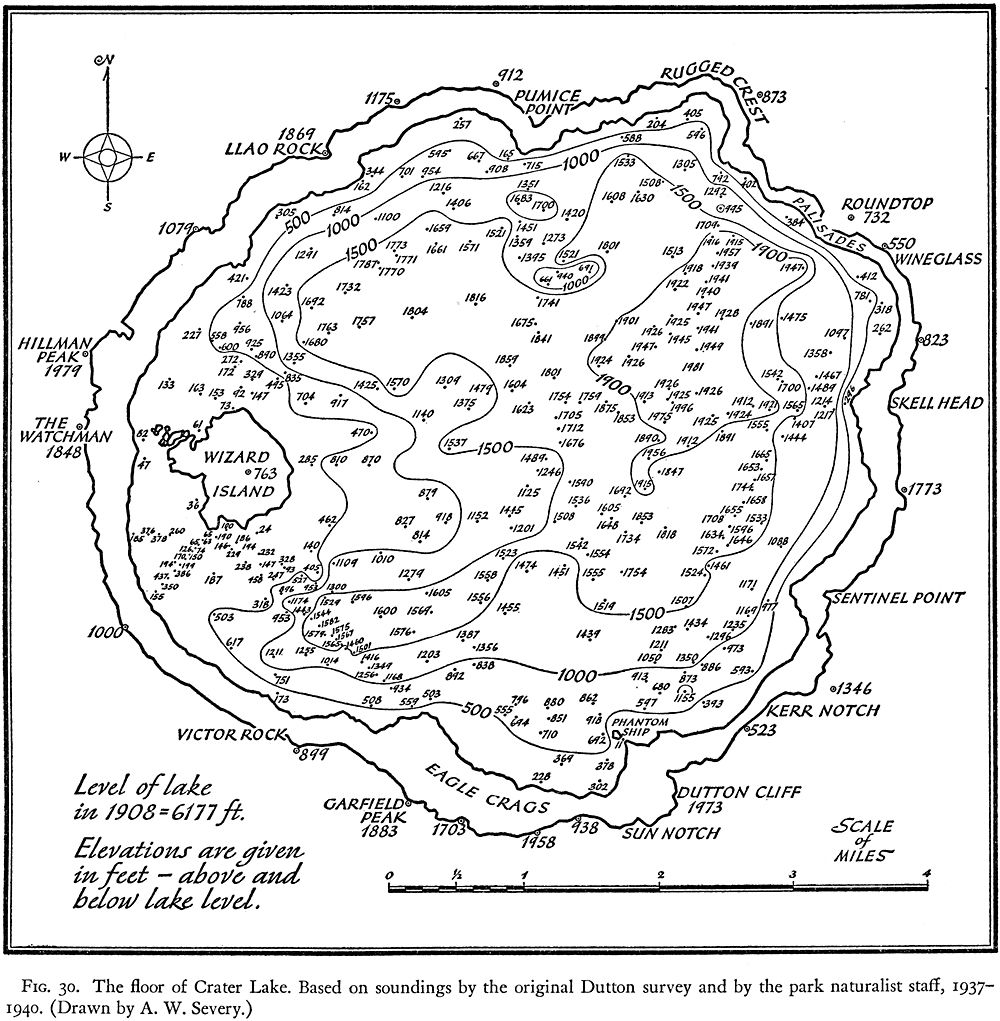5. Diller inferred that, in addition to the cone of Wizard Island, two other cones exist within the caldera. Additional soundings disprove this view. About a mile south of Pumice Point, a conspicuous prominence rises from the caldera floor. Its summit lies only 661 feet below the level of the lake. Approximately 1000 feet to the north, the floor falls to 1521 feet. These slopes are much too steep to be the sides of cinder or lava cones, and presumably they indicate a large fault block or horst left standing during the differential foundering which produced the caldera. Halfway between this supposed horst and Pumice Point there is a depression 1700 feet deep, but until more soundings are made, it is impossible to say whether this marks the site of an explosion vent or of a sunken fault block.
The foregoing appear to be the principal features of the caldera floor. The question now arises, Do they shed any light on the origin of Crater Lake? Unfortunately, post-caldera eruptions have seriously modified the configuration, and the floor has probably suffered local subsidence owing to cooling and contraction of the underlying body of magma. The answer to this question, therefore, cannot be conclusive, Nevertheless, such evidence as the soundings provide strongly favors the theory of collapse. Had the summit of Mount Mazama been destroyed by explosion alone, the original floor of the caldera would be marked by one or more large explosion vents. It would be marked also by many cones of blocky ejecta, and the walls would be bordered by imposing slides of talus. Yet the soundings reveal no such cones, and there is a conspicuous paucity of talus beneath the margins of the lake. If it be answered that the cones and talus have been buried by upbuilding of the caldera floor, then even more than 17 cubic miles of Mount Mazama must have been removed by explosion. The futility of this argument has already been discussed.


